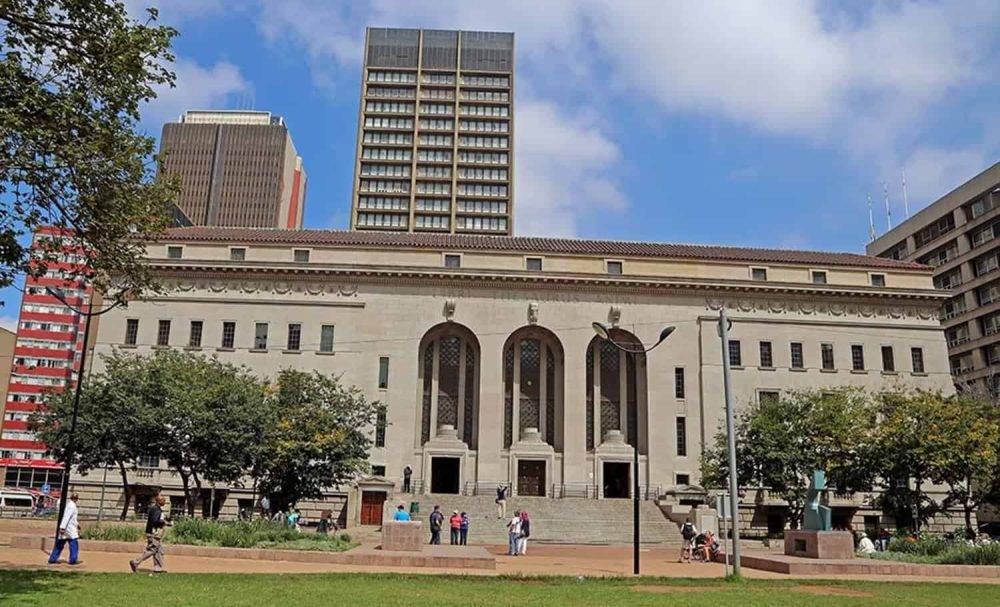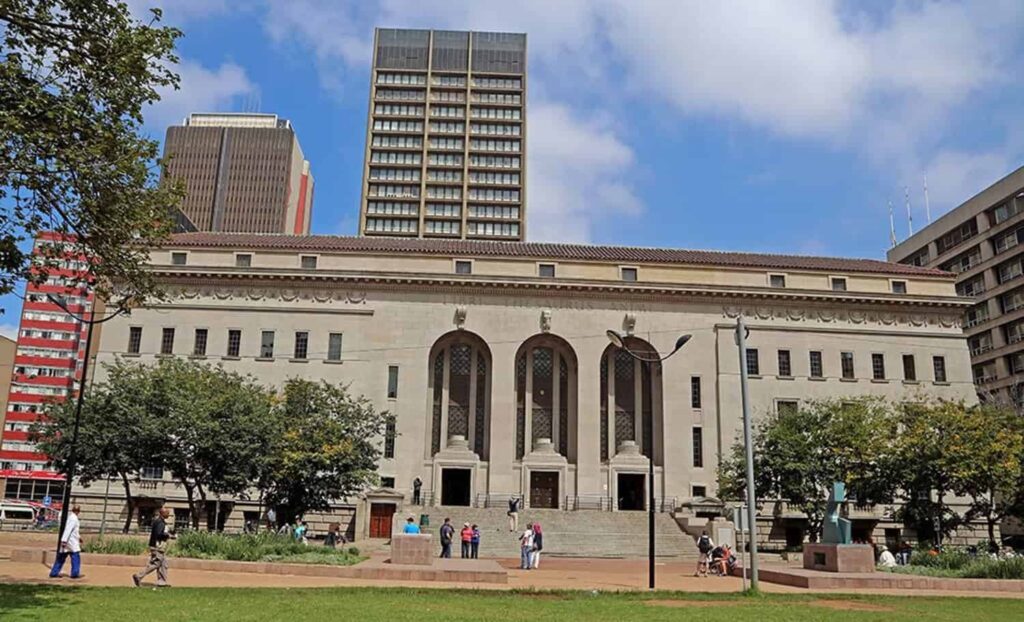
The library was initially closed in 2020 due to COVID-19 restrictions and remained closed after restrictions were lifted due to structural damage.
TThe doors of the Johannesburg City Library were briefly opened this week for inspections by media, city councillors and civil society groups, who want to know why the library is still not open four years after it was closed.
The library was initially closed in 2020 as a COVID-19 precaution, but remained closed even after restrictions were lifted due to structural damage. The city's Emergency Management Services (EMS) also said the building did not meet fire safety standards.
Speaking at a meeting on the library's first floor this week, Johannesburg Regional Development Department project director Stanley Mlambo said the plan is to partially open the library within six months once a contractor is appointed, and fully open within 10 months.
“There were a lot of leaks from the roof of the building, there was a lot of water damage and because of EMS issues we were not able to carry out our work as we were concerned about responding to and containing the damage if a fire were to break out,” Mlambo said.
The total cost of restoring the building is R54 million, but there is a shortfall of about R30 million based on the budget approved by the city.
Johannesburg Development Agency project manager Siyabonga Ngemu said the city needed to address leaking roofs and faulty internal gutters.
One escalator still works, leading to the library's first floor, a space once filled with the hushed conversations of students studying at their desks. This week, the escalator to the second floor wasn't working, so the tour group climbed up to the performing arts room, where Mlambo and Ghem pointed out a leak; paint was peeling off parts of the ceiling and there were water stains on the walls.
A perplexed Flo Bird, founder of the Johannesburg Heritage Foundation, which has been lobbying for the library to be reopened, asked city officials: “Did they have to close the building to fix it?”
“My point is, you had no idea libraries were so important to the people who live in town.”
The escalators to the third and top floors were closed, forcing the group to use a side staircase with marble finishes and curved iron handrails to approach the damage scene.
All the wooden doors to the small library, including the children's library, were closed, but I could peer through the glass to see a large, dusty room with half-full shelves of books. The ceiling was riddled with water stains and hairline cracks, the wooden blocks on the floor were loose, and the bookshelves were covered in dust.
“The facilities are old and the building itself is deteriorating and everything is falling apart,” Ghem said.
He said the only work carried out so far had been to repair the roof and gutters, with only one internal gutter needing repair. The cost of repairing the damage had been R21 million.
Across the third floor hallway is the Harold Strange African Studies Library, which houses thousands of books about African history, people, places and heritage.
Civil engineer Wynard Dreyer, who took part in the tour, said: Mail & Guardian The building was previously fire-rated, but now requires “fire curtains” in front of the glass doors to isolate them from the rest of the building in the event of a fire.
Bird complained that it wasn't necessary to close the entire building for repairs: “They could have done this work. They just needed to close Harold Strange. Two days? How much longer?” [should] Close each section as you work.
“The people who come here are regulars, so the librarians can just say, 'Sorry, we'll have a crew come over for the next two days to fix it, then please come back and do the work after that.'” The important thing is that people continue to use the library.
The group then descended four flights of stairs and down a narrow hallway to the basement.
Dreyer told the M&G that the fire suppression system – four big red cylinders – contains halon gas, which is dispersed through pipes in the low ceiling and sprayed through nozzles which exclude oxygen to contain the fire.
He said the door to the basement was made of wood and had to be replaced with a purpose-built fire door because it could allow oxygen into the room.
The basement had rows of iron shelves stretching for about half a kilometre, packed with books.
Wynard said the books are city archives, many of which date back to the 1800s, and their gold-printed covers and intricate patterns make them almost too precious to touch.
“From a compliance perspective, currently the entire building from the basement to the top floor is connected to one system for fire control, which is not correct,” Ghem said.
“So, we managed to separate the basement from the top floor, but our EMS colleagues advised us that we needed to have a separate system monitoring the top floor and another system monitoring the basement.”
The City of Johannesburg said it would “compress the programme” and try to open libraries sooner.
Bird said he was looking forward to opening at Christmas.

